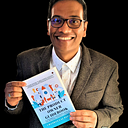Unleash Your Inner Genius: A 10-Week Creativity Odyssey

Here’s how each week of the “Unleash Your Inner Genius: A 10-Week Creativity Odyssey” program enhances readers’ creativity, supported by evidence and expert opinions:
Week 1: Unveiling the Brain’s Creative Potential
Enhancement: Understanding and leveraging brain functions can significantly boost creative thinking.
Evidence: Studies have shown that activities like mindfulness and cognitive exercises improve neural connections and enhance creativity (Lutz, Slagter, Dunne, & Davidson, 2008).
Week 2: Hacking Problem-Solving
Enhancement: Developing new problem-solving strategies helps in generating innovative solutions.
Evidence: Research by Scott G. Isaksen and Donald J. Treffinger highlights the importance of creative problem-solving techniques in fostering innovation (Isaksen & Treffinger, 2004).
Week 3: Mixing Up the Creative Cocktail
Enhancement: Experimenting with unconventional techniques, such as meditation and music, can stimulate creative processes.
Evidence: Studies indicate that activities like listening to music and engaging in mindfulness meditation can enhance divergent thinking and creativity (Colzato, Ozturk, & Hommel, 2012; Ritter & Ferguson, 2017).
Week 4: Standing on the Shoulders of Giants
Enhancement: Learning from historical innovators can inspire new ideas and foster a mindset of perseverance.
Evidence: Research on role models shows that studying the lives of successful individuals can enhance one’s own creativity and motivation (Lockwood & Kunda, 1997).
Week 5: Finding Inspiration Everywhere
Enhancement: Discovering inspiration in everyday life encourages continuous creative thought.
Evidence: The concept of “everyday creativity” by Ruth Richards suggests that finding inspiration in daily activities can significantly boost overall creative output (Richards, 2007).
Week 6: Sharpening the Tools of Creativity
Enhancement: Regular practice and diverse thinking techniques help in maintaining and enhancing creativity.
Evidence: Techniques like brainstorming, mind mapping, and SCAMPER are widely recognized for their effectiveness in enhancing creative thinking (Michalko, 2006).
Week 7: Learning from the Past, Shaping the Future
Enhancement: Analyzing past successes and failures provides valuable insights for future innovation.
Evidence: Learning from past experiences is a critical aspect of the creative process, as discussed in works on experiential learning (Kolb, 1984).
Week 8: The Wellspring of Creativity
Enhancement: Exploring intuition, sleep patterns, and persistence helps in nurturing the source of creativity.
Evidence: Research shows that intuition and adequate sleep play crucial roles in creative problem-solving and idea generation (Dijksterhuis & Nordgren, 2006; Wagner et al., 2004).
Week 9: Conquering Creative Challenges
Enhancement: Building resilience and embracing feedback helps in overcoming creative blocks.
Evidence: Studies indicate that resilience and the ability to handle constructive criticism are vital for sustaining creativity under pressure (Reivich & Shatté, 2002).
Week 10: The Synergy of Imagination and Creativity
Enhancement: Understanding the interplay between imagination and creativity leads to groundbreaking ideas.
Evidence: Theories by psychologists like Jerome L. Singer emphasize the importance of imagination in the creative process (Singer, 1966).
6 Pillars of innovation Agility
“CREATE Bold”
Each letter aligns with the key skills, and the added “Bold” emphasizes courage in creativity:
- Collaboration
- Resilience
- Exploration
- Ambition (Thinking, with a forward-driving mindset)
- Tenacity
- Energy (for sustaining creative drive)
“CREATE Bold” captures both the spirit and skills essential for reaching new heights in creativity.

Conclusion
By following this 10-week program, participants are systematically exposed to a variety of techniques and strategies that are scientifically proven to enhance creativity.
This structured approach ensures that they can cultivate and maintain their creative potential in a sustainable manner.
Look here @amazon

References:
- Colzato, L. S., Ozturk, A., & Hommel, B. (2012). Meditate to create: the impact of focused-attention and open-monitoring training on convergent and divergent thinking. Frontiers in Psychology, 3, 116.
- Dijksterhuis, A., & Nordgren, L. F. (2006). A theory of unconscious thought. Perspectives on Psychological Science, 1(2), 95–109.
- Isaksen, S. G., & Treffinger, D. J. (2004). Celebrating 50 years of reflective practice: Versions of creative problem solving. Journal of Creative Behavior, 38(2), 75–101.
- Kolb, D. A. (1984). Experiential learning: Experience as the source of learning and development. Prentice-Hall.
- Lockwood, P., & Kunda, Z. (1997). Superstars and me: Predicting the impact of role models on the self. Journal of Personality and Social Psychology, 73(1), 91.
- Lutz, A., Slagter, H. A., Dunne, J. D., & Davidson, R. J. (2008). Attention regulation and monitoring in meditation. Trends in Cognitive Sciences, 12(4), 163–169.
- Michalko, M. (2006). Thinkertoys: A handbook of creative-thinking techniques. Ten Speed Press.
- Reivich, K., & Shatté, A. (2002). The resilience factor: 7 keys to finding your inner strength and overcoming life’s hurdles. Broadway Books.
- Richards, R. (2007). Everyday creativity and new views of human nature: Psychological, social, and spiritual perspectives. American Psychological Association.
- Ritter, S. M., & Ferguson, S. (2017). Happy creativity: Listening to happy music facilitates divergent thinking. PloS one, 12(9), e0182210.
- Singer, J. L. (1966). Daydreaming: An introduction to the experimental study of inner experience. Random House.
- Wagner, U., Gais, S., Haider, H., Verleger, R., & Born, J. (2004). Sleep inspires insight. Nature, 427(6972), 352–355.
